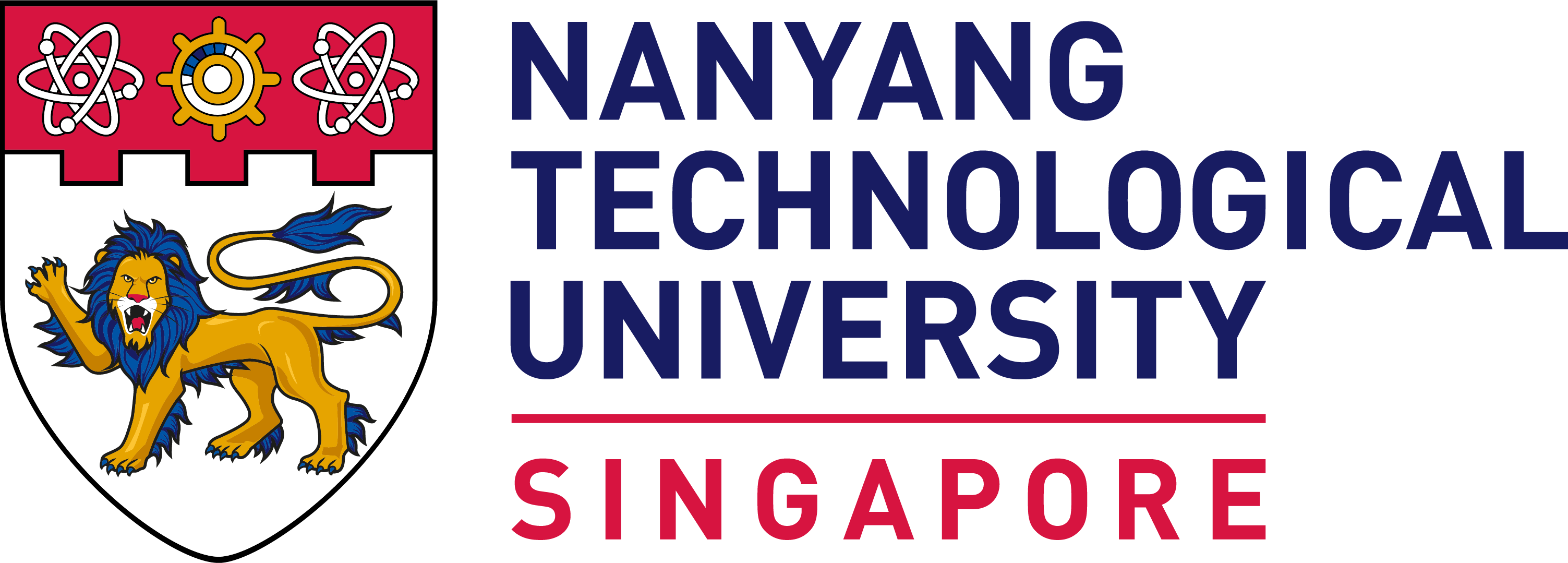ARTechnology Pioneer: Designing solutions to the challenges of our times
In an interview, Prof Vibeke Sorensen, chair of NTU's School of Art, Design and Media (2009-2019), shares her views on how collaborations between art and science can benefit society in an era of dynamic global challenges.

An interview with Prof Dorrit Vibeke Sorensen, Chair (2009-2019), School of Art, Design and Media. Credit: Dorrit Vibeke Sorensen.
Three decades of experience in setting up programmes in media art made Prof Dorrit Vibeke Sorensen the ideal candidate when taking over the reins of NTU’s School of Art, Design and Media (ADM)—Singapore’s first university-based art and design school—in 2009.
Before her position as ADM Chair, which she held from 2009-2019, Prof Sorensen was Founding Director of the Computer Animation Laboratory at the California Institute of the Arts and Founding Chair of the John C Hench Division of Animation & Digital Arts at the University of Southern California.
In this interview, she takes a look back at ADM’s progress over the last decade and shares her views on how collaborations between art and science can benefit society in an era of dynamic global challenges.
What role can art, design and media play in addressing today’s global challenges?
Today’s global challenges are primarily environmental, in particular because of climate change, but also social, due to overpopulation and overdevelopment. Our faculty and students respond in many ways to these challenges. For example, we develop new approaches to the preservation of heritage sites—our collective heritage and collective memory—that are at risk of deterioration because of climate change or age or conflicts and war.
Some of our faculty members use art, for instance, portrait painting, to get in contact with marginalised communities and then develop technologies to communicate their problems and disappearing cultures. Others work with remote communities in countries like Laos to help their traditional handcraft survive by bringing it to new markets using design thinking strategies—a creative problem-solving approach using designers’ tools—and mobile technology.
One of the school’s strategic areas is in bioart and biodesign. 3D printing in particular provides many possibilities to work collaboratively; for instance, with people in medicine such as in the 3D printing of bones, or in constructing and including wearable technologies in fashion for disabled people. We work in a compressed research and development cycle, and some of our faculty members invent new materials, like vegan leather and biodegradable textiles, and apply them to designs.
What have been the challenges of developing an arts school in a research university that has traditionally focused on engineering and science?
Engineers and scientists often do not have backgrounds in art and design, so the biggest challenge is educating people to understand what we are doing. The art school is a place for everyone at NTU to become inspired, and provides a huge potential for expanded interactions with the rest of the University. Many of our faculty have degrees in multiple fields, including humanities, mathematics, engineering and science, and their work is often closely aligned with projects in other parts of the University such as in computer science.
Our work at ADM combines technologies with aesthetics, fusing technical knowhow with imagination. This can be attractive to people from many fields who want to extend their skills to new areas, such as interactive digital media, within a highly refined, creative and experimental environment.
Before you joined NTU, you were involved in setting up various programmes and centres in media and arts in the US. What are the differences between how arts, design and media schools are run in Asia and the US or Europe?
The system here is in between the US and European systems, not quite either one, especially regarding graduate education. ADM is Singapore’s first professional arts school at the university level. In the US, university arts education goes back to the 1960s. The time scale is different, the references are different, and you don’t have the same history of art and design.
One thing that I particularly like here is that there is no perceived conflict between high and low art, or between folkcraft or handcraft and high art. People don’t reject the traditional ethnic arts as they did in the West. And here it’s particularly exciting if you think about the beauty and diversity of Asian cultures.
Which of ADM’s achievements are you most proud of?
Our extensive international partnerships include student exchanges with the UK’s Imperial College London and Royal College of Art through their joint Global Innovation Design programme. We have an incredible agreement with the City of Venice, Italy, for our students to have access to every art event, like the Venice Biennale, and to study in all museums and libraries of the city. Usually, in the US, you get one of those things, but not the whole spectrum. In addition, the great Italian artist Michelangelo Pistoletto has graced our building with the first installation in Asia of his Third Paradise conceptual artwork.

We proposed the NTU Centre for Contemporary Art Singapore (NTU CCA), which was founded in 2013. We designed it as the fine art branch of the School that would allow students to learn by doing; kind of the European apprenticeship model, where they could work with artists and assist, observe and engage them in the studio to understand and even contribute to their process of creation, and not just see the final artwork as a photograph in a book. As an exhibition space, it allows students to see how artists and curators plan and mount exhibitions.
The Centre also gives ADM a public presence through its open workshops and events, which allows the public to be educated about art. It also serves as an avenue to feed into Singapore’s museums and public art, providing the foundation for our Master’s programme in Museum Studies and Curatorial Practices.
Ten years ago, NTU’s Art, Design and Media school did not appear in the Art & Design subject rankings of global universities by Quacquarelli Symonds. This year it is ranked 30th globally—only one rung below Yale University. I’m really proud of that and of the team that made it happen.
What new grounds in research and innovation has ADM broken, and what role does transdisciplinarity play?
We’ve been doing work with immersive media, virtual and augmented reality, robotics (we have a robotics artist who works with biomimicry and dance), wearable technologies, artificial intelligence and big data.
We were breaking into new areas in bioart and biodesign—including 3D (bio-)printing and wearable technologies—as well as in digital archives and cultural heritage, networked immersive media and wireless physical computing. Design is not just about how something looks; it’s about how something works, what can be done with it and how it changes the way we think and live our lives, for example, in medical applications, social media and education. A wonderful example is the work of ADM Lecturer Dr Gül Inanç, who founded the non-profit organisation Opening Universities for Refugees. Supported by the United Nations, the organisation uses technology-enhanced learning and creates global networks among academic institutions, non-governmental organisations and displaced communities.
How is ADM addressing the demand for skilled personnel in art, design and media in Singapore and the region?
Surveys show more than 80% of our graduates are employed in the design field. It’s a chicken and egg situation in Singapore—it’s not like Hollywood where there is a pre-existing big industry that would hire everybody. Here, the fields of art, design and media and their applications are new. The National Gallery Singapore only opened in 2015, ten years after the School. We had to create the industry and “ecosystem” and then create more students to fill generated demand.
Design thinking is now used widely in the business and finance world. To my knowledge, about 60% of graduates with design degrees—nationally and regionally—are hired in fields that are traditionally non-design. They are brought in because designers are good in solving problems and realising the solutions, giving them employment opportunities as planners and not just creative makers.
Our graduates also work at international companies and agencies such as The Walt Disney Company, Lucasfilm, Twitter and Design Bridge, as well as in banks or research institutions. They are also following the major international trend of starting their own companies.
Thanks to our fantastic high-performing faculty—which includes people like Academy Award winner Prof Ben Shedd—the students receive a great education, with undergraduates having their films shown at major film festivals, and they get snapped up for jobs. ADM’s film programme clinched the title of “Best Overall School” in Singapore’s National Youth Film Awards for four years in a row, including for live action, visual effects and animation.
You are the founding director of the Centre for Asian Art and Design (CAAD) at ADM. How is the centre progressing?
The centre preceded the NTU CCA and is more focussed on Asian design and cultural heritage. We hosted several conferences on Islamic Art Design and Architecture, including showcasing the prestigious V&A Jameel Prize 3 art exhibition, which is inspired by Islamic heritage and traditions. The centre is also working with regional artists, artisans, designers and fine artists, and supports events and exhibitions of regional painters in the ADM gallery.
What is your vision for the school going forward?
If it were up to me, bioart and biodesign would be a strategic focus going forward. Also, I hope that ADM continues to focus on heritage and culture, areas we are already very strong in. To encourage dialogue between the arts and the sciences, as well as on topics such as sustainability and environment, it is important that we have greater collaboration with NTU’s Asian School of the Environment and the Earth Observatory of Singapore at NTU. This way, we can work with the best minds on problems such as climate change.
What is the focus of your own artistic work?
Over the years, I’ve gone from drawing, painting, photography, film, video, computing, networking and big data to immersive installation and other areas. One memorable interactive visual-music installation, called Illuminations (see images below), incorporated plant biofeedback using sensors for their photosynthetic activities and electro-acoustic music derived from exhibition visitors playing Tibetan singing bowls. With the help of ubiquitous computing, the sensor feedback was translated into illuminations on big screens.


Exhibition of the interactive installation “Illuminations” in the ADM gallery (2013). Credit: Dorrit Vibeke Sorensen.
This interview appeared first in NTU’s research & innovation magazine Pushing Frontiers (issue #15, June 2019).



.tmb-listing.jpg?Culture=en&sfvrsn=370a7c71_1)

.tmb-listing.jpg?Culture=en&sfvrsn=29c7e020_1)
.tmb-listing.jpg?Culture=en&sfvrsn=6c7b6f1f_1)
.tmb-listing.jpg?Culture=en&sfvrsn=ab6472c8_1)